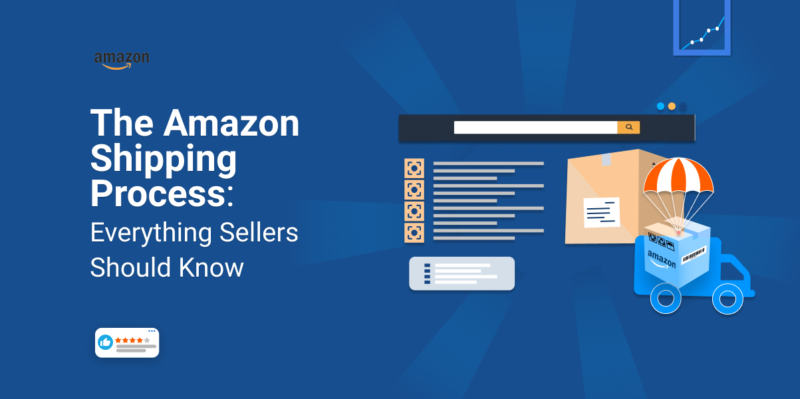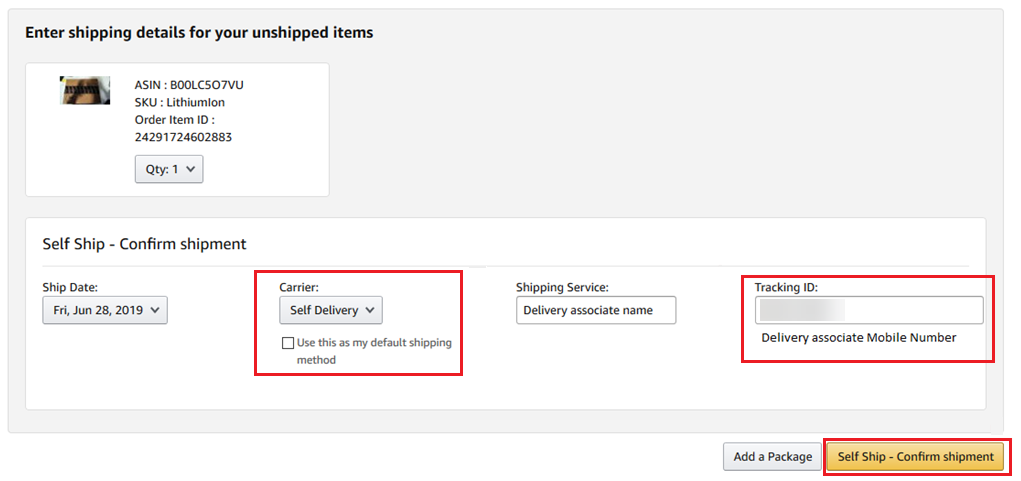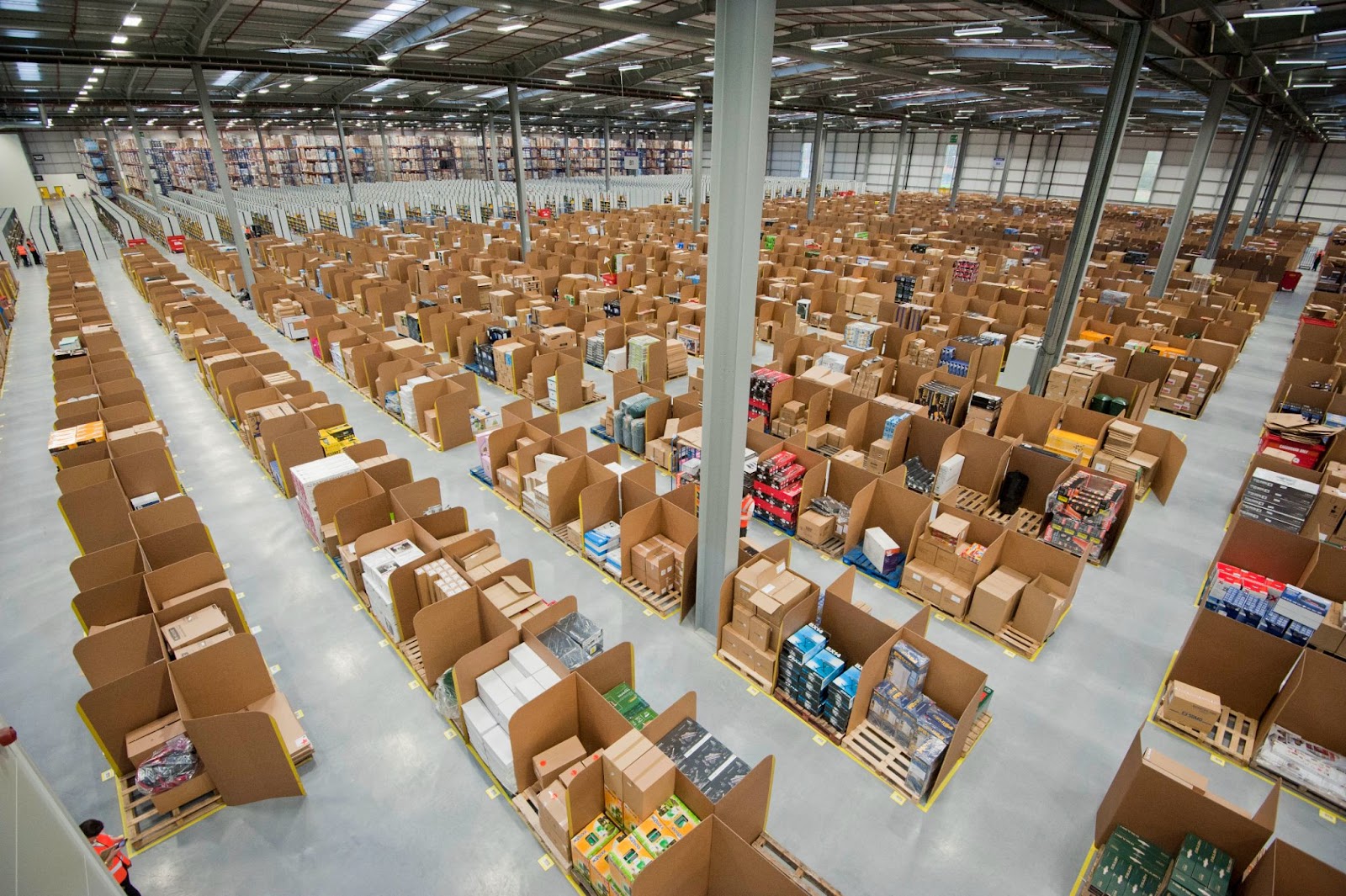
If you’re an Amazon seller, you know how important it is to properly maintain your brand page and optimize listings to make sales. However, are you familiar with how shipping works in a place like Amazon? Let’s discuss everything sellers should know about the Amazon Shipping process.
While there is a ton of information you can find online, we’ve broken down exactly what sellers need to know about the Amazon shipping process to ensure they succeed and retain happy customers.
How Does Amazon Shipping Work For Sellers?

To have items successfully delivered by Amazon, sellers need to know how Amazon sends packages.
First, it’s essential to know the two ways to ship items to customers in the Amazon marketplace. These are known as Fulfillment By Amazon (FBA) and Fulfillment By Merchant (FBM).
FBA sellers don’t have to pay for packaging, shipping, and handling to ship your goods because Amazon’s fulfillment team will do it for you. However, they will need to pay an FBA fee depending on the weight and size of the product.
If you’re not in the Amazon FBA seller program, you’ll need to pay for your shipping costs through your shipping provider of choice.
Do Sellers Receive Payments From Amazon To Ship Customer Orders?
No, Amazon FBA sellers do not receive money for shipping costs.
Instead, FBA sellers pay a fee that is determined based on the size and weight of your product. If you are shipping your item yourself, you will receive that shipping cost from the customer when they place the order.
What’s The Cost Of Amazon Free Shipping For Sellers?
Typically, this is free if you’re a part of Amazon FBA. The consumer pays the cost through their Prime membership, which is only available by subscribing to the program and paying a monthly fee.
If you’re not a part of Amazon FBA, it usually means you’ll need to factor the price into the price you set for the customer.
How Does Amazon Prime Shipping Work For Sellers?
To offer Amazon Prime, you’ll need to be a part of the Amazon FBA program. Joining the FBA program allows buyers to ship items that are eligible for Prime at no cost to them.
In this case, if a customer places an order that is not eligible for prime shipping, they might have the option of choosing between expedited shipping and free shipping. Both options cost the seller money.
The Shipping & Fulfillment Process: Demystified
As an Amazon seller, you’re likely aware of how important it is to understand the shipping logistics process. Once you know what’s involved with Amazon shipping, you can ensure your items arrive at your customers’ location.
What Are The Stages Of Shipping?
Various stages happen during the Amazon shipping process. We’ll break down exactly what each of these terms means so that you can prepare for the next order you will receive.

Pre-Shipment (When A Buyer Orders Your Brand’s Products)
Before the customer receives your order, you’ll receive a notification from Amazon. If your business participates in Amazon FBA, the order information goes to the appropriate warehouse. From there, Amazon Associates in the warehouse pick, package, and ship your customer’s order.
When your business ships items itself, the notification will go to your business. The order confirmation notification informs you to prepare the package for shipping. The notice also explains how long you have to ship your items to customers.
Unshipped (Here’s What This Status Means For Amazon Sellers)
You might be wondering what this status means for Amazon sellers. The unshipped stage explains that the item is yet to ship to the customer.
In the Amazon shipping process, you’ll see this status until a carrier receives an order. If you’re sending the product yourself, you’ll need to show you shipped it to change the status manually.
Pending (Buyers Should Expect Longer Processing Times)
Pending is the Amazon shipping process step that tells sellers to wait before sending an item. This status doesn’t mean that an item is on its way.
Instead, the pending status tells sellers that there’s an issue with the order. This status can take anywhere from two days to two weeks to clear, depending on your location or the area of your Amazon fulfillment center.
There are several reasons why orders receive the pending status. If credit card payment doesn’t complete, the order will go pending. Likewise, Amazon will set an order to pending if an item is out of stock or while waiting to gather all free-shipping eligible items.
Canceled (When Payment Doesn’t Go Through, Or There’s Fraud)
A canceled status means Amazon has canceled the payment for your product. In most cases, Amazon will send you a notification that this has happened. Order cancellation may occur due to fraud or when the payment didn’t go through, in which case you shouldn’t ship the product.
Fulfillment (Processing The Order)
Fulfillment occurs after Amazon accepts payment without a problem. The customer’s order will move to the shipping process through Amazon’s fulfillment center unless seller-fulfilled. This shipping process includes:
Preparing your item for shipment.
- Boxing it up.
- Labeling it.
- Sending tracking information to the carrier.
- Here’s How The Shipping Process Works Step By Step For Amazon Sellers
- If you’re shipping items without Amazon FBA, you’ll want to understand exactly how the shipping process works step by step.
It Starts With A Seller’s Order Notification
The shipping process starts with Amazon sending you an order notification. This notification will help prepare you and let you know that an order is on its way.
Next, The Seller Receives The Buyer’s Funds
Amazon will always make sure to collect payment before you send out a product. Once a customer’s financial transaction completes, you’ll be alerted that the funds are available and that you’re ready to move forward with an order.
Afterward, The Seller Processes The Order
The seller will then prepare the order, receive the information, gather the products, and get the materials necessary to ship it out. This step is known as processing the order.
After Processing, The Seller Ships The Order
Then it’s time to ship out the order! The seller will head to the carrier of choice and ship out the products ordered by the buyer.
Finally, The Buyer Receives Order & Leaves Feedback.
After the Amazon seller has shipped out the order, it’s time to sit back and wait for a customer review. Mail carriers will take care of the rest from there on out.
It’ll be up to you as Amazon sellers to make sure you ship with excellent service, so your customers will leave good feedback on your page.
In Conclusion: The Amazon Shipping Process Isn’t Too Complex.
Amazon makes it simple to receive order notifications and ship products on time. As a new brand on Amazon, you’ll receive plenty of notice about customer orders and have time to complete fulfillment.
As you complete the process, you can also consider whether your company can meet two-day shipping obligations as a Prime seller. If you enroll in the FBA program, you’ll automatically become Prime sellers, and Amazon will handle shipping for you.
However, those who prefer to handle fulfillment in-house can join the seller-fulfilled Prime program and manage the process without Amazon’s assistance. The method you decide should depend on what works best for your business while also considering shipping costs are a significant ongoing eCommerce expense.

